Emerald Ash Borer and Ashland’s Trees
What’s the meaning of the name, Ashland? Well, it is the Ash trees of course! Take a walk at Ashland Nature Center and you will see that most of the Ash trees along the Red Clay Creek have been cut down. Stumps of the trees are scattered, as are the trees themselves, which have been left where they’ve fallen across trails. Why would we do this? The invasive, Asian Emerald Ash Borer!
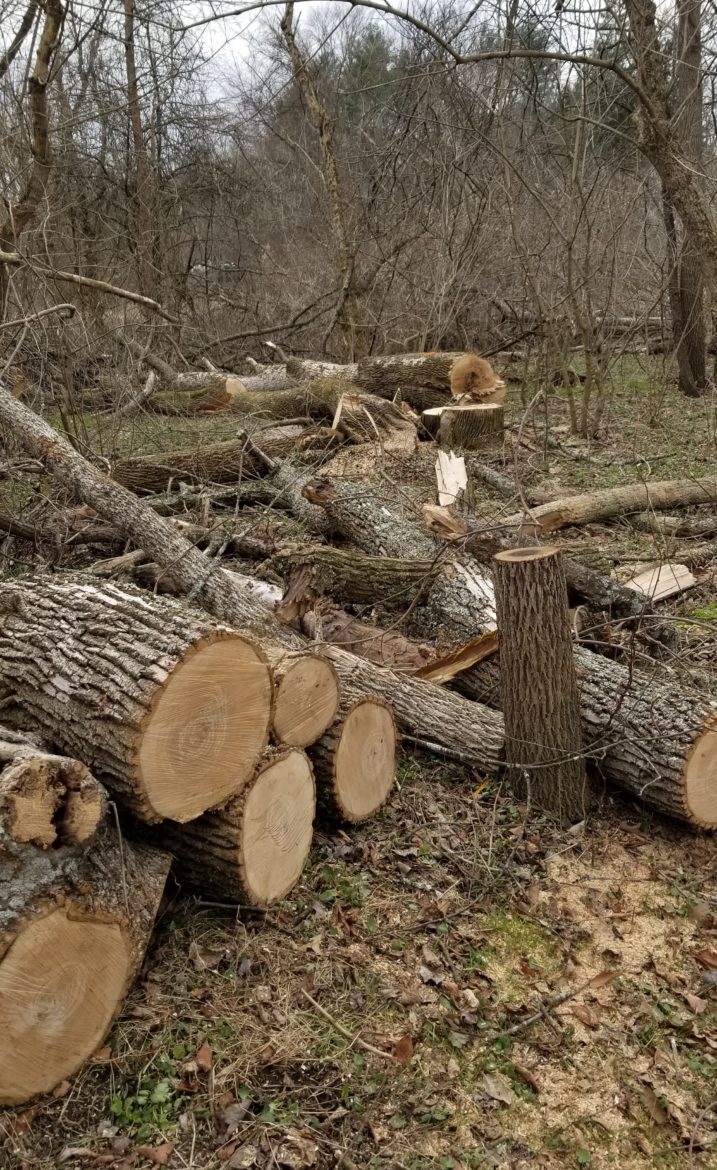
The Emerald Ash Borer (EAB), is an invasive, Asian insect which has made its way to Delaware. In the 1990’s, EAB made its way from east Asia to Detroit, Michigan in a cargo shipment. From there, the borers have spread in all directions, killing Ash trees in their path. This beetle is bright, metallic green, and has larvae that feed on the living phloem and cambium layer under the bark. Heavy infestations disrupts how the tree distributes nutrients and water in the trunk, and the borer essentially girdles the tree, killing it.
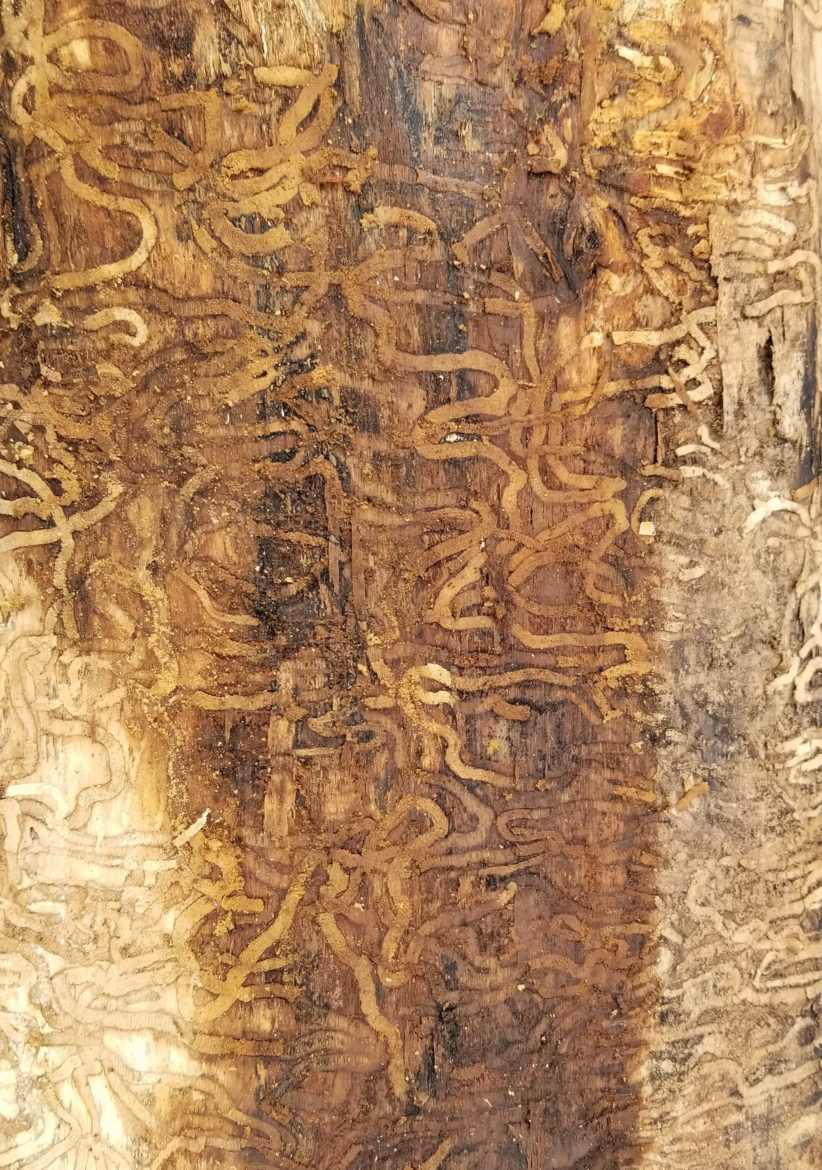
This species lives in Asia. The borer does not significantly harm Ash trees there because they evolved together. In the US and Canada, EAB lacks predators and diseases, because of this, the Emerald Ash Borer expanded its numbers and range extremely quickly. In Delaware, EAB was first detected in New Castle County in 2016, but by 2018, significant numbers were found in many areas in the state. Once infested, a tree will show crown dieback, shoots coming out of the base of the tree, and will die in about 3 years. Most of the Ashland trees are dead.
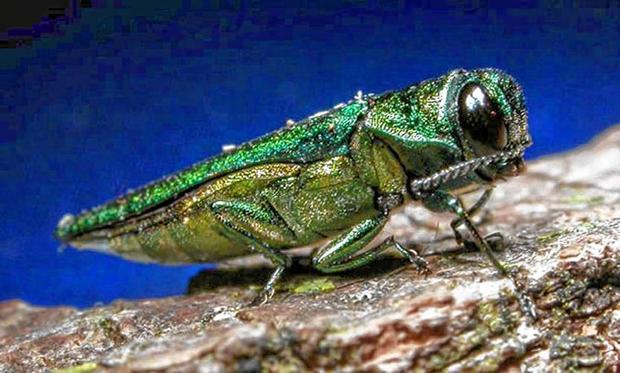
Where are the Emerald Ash Borers Hiding?
Adult EAB are very difficult to see. They are about a half-inch long, emerald green, and look like they would be hard to miss. But they are. They apparently live in the treetops, and feed on ash leaves and mate. They only live for two or three weeks in late May to mid-June, so the window to see an adult is short. Eggs hatch in about a week, and the first instar of the larvae tunnels into the bark, reaching the living tissues underneath. Here, they eat, overwinter, pupate, and emerge as an adult the following May or June.
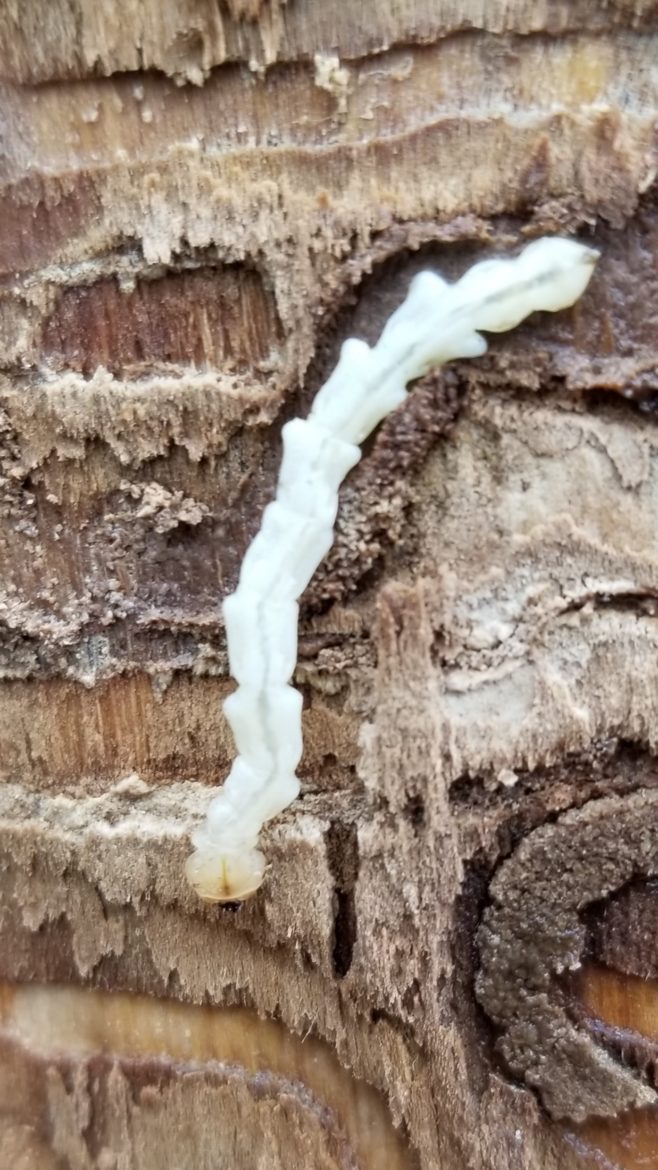
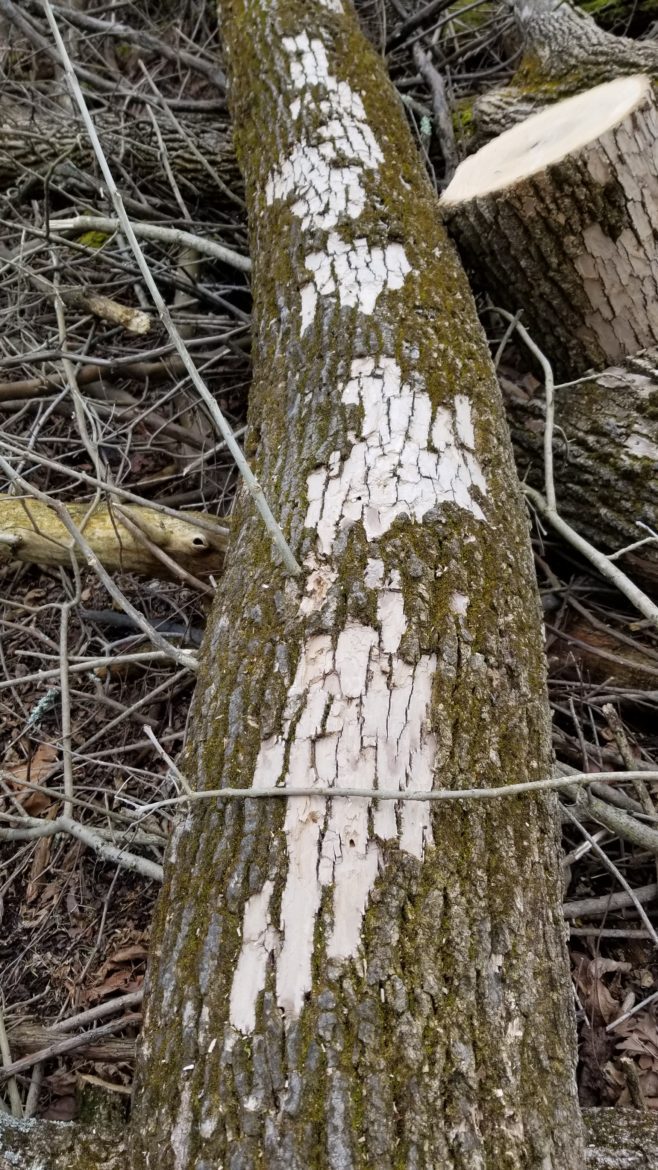
There were about 50 large Ash along the Red Clay Creek at Ashland that were dead or nearly so this winter. This is a hazard in a high-traffic area of hikers, and it is in this forest where many school children, campers, scouts and adults stop to study nature. After an Ash dies, it dries out quickly and becomes very brittle. Limbs fall off easily in the wind, and trees can snap in half. Ash fall apart more quickly than many other kinds of trees. Because of this hazard to our visitors and program participants, we opted to have them cut down.
Why aren’t we cleaning up the trees?
We do not plan on hauling out the wood, and will be leaving the fallen trees where they lay. Mostly, the dead trees will become useful to birds, other insects, and wildlife in general. The crowns of these trees on the ground will also protect new trees and shrubs from deer browse. We will be planting trees in the locations where the Ashes have died, in our continuing natural lands management efforts.
What will we call Ashland Nature Center now that the Ashes are gone?